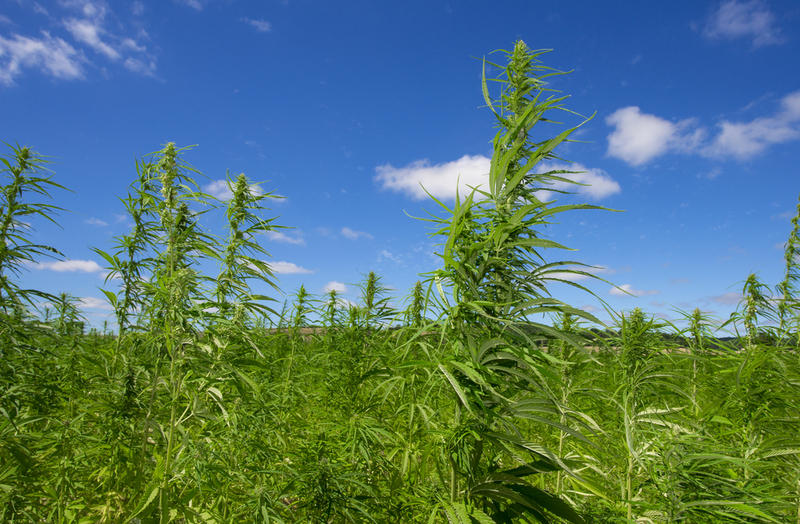Russia to Resume Industrial Hemp Cultivation for Textile Production
The Russian Ministry of Industry and Trade reports that the share of natural fabrics and materials in the country’s textile industry is declining, as synthetic materials become more widespread. Nevertheless, there are plans to make greater use of raw materials for technical textiles, and hemp fiber will once again be used in Russian industry.
Over the past five years, annual growth in the consumption of natural fabrics and fibers in Russia has remained at 5-6%, while consumption of synthetics has increased by 13-15%. Today, this gap continues to widen in favor of synthetics. This trend is seen worldwide, and analysts predict that the share of synthetic and artificial fabrics globally will rise from 45% to 65-70% by 2025.
Last year, the Russian market for synthetic and artificial fabrics was estimated at 650,000 tons and 55 billion rubles. Analysts expect further growth this year.
Until recently, most synthetic fabrics consumed in Russia were imported, mainly from China. However, this may change in the coming years, as the Russian government has announced plans to increase domestic production.
“For a long time, East Asian countries have prioritized the production and export of synthetic fabrics and fibers. According to statistics, this region now accounts for about half of the world’s fabric production. The competitiveness of Asian manufacturers on the international market largely depends on their ability to lower prices. Because of this, it will be difficult for Russian producers to compete with Asian companies, even within Russia,” said Andrey Razborodin, President of the Russian Union of Entrepreneurs of Textile and Light Industry (RSPTLIP).
Additionally, in recent years, the volume of synthetic fabric and fiber production in Russia has grown significantly. Today, domestic producers can meet about 35% of Russian demand, and this figure is likely to increase in the future.
RSPTLIP analysts believe this dynamic is due to the better characteristics of synthetic fabrics compared to natural ones, as well as their more stable pricing. According to forecasts, polyester and viscose fibers (which already account for 85% of synthetic and artificial fabrics worldwide) will remain the most popular non-natural fabrics.
Innovative Materials
At the same time, the Russian government plans to increase production of innovative textile materials in the coming years by expanding the base of necessary raw materials.
Sources close to the Ministry of Industry and Trade say that as part of this initiative, the government intends to make industrial hemp the main raw material for technical textiles and other innovative textile materials.
Industrial hemp grows in the Northern Hemisphere. It is a variety of hemp cultivated specifically for industrial processing and use. Industrial hemp is one of the fastest-growing plants and has been processed into fiber for 10,000 years. It is used to produce a wide range of products, including paper, fabrics, clothing, biodegradable plastics, paint, insulation materials, biofuel, food, and animal feed. In the textile industry, industrial hemp can serve as a substitute for flax or even cotton, and is used for upholstery and as a base for composite materials.
The Russian government and some private companies plan to create conditions to expand the acreage dedicated to hemp cultivation in the country. The USSR once accounted for 70% of the world’s industrial hemp-growing areas, about 1 million hectares.
However, hemp production in the USSR was completely halted in 1987 by order of President Mikhail Gorbachev, which banned citizens from growing hemp on their land, classifying it as a crime.
By 2011, hemp cultivation in Russia had almost disappeared. Today, only 1,500 hectares are allocated for hemp cultivation, mostly in the republics of Adygea and Mordovia, as well as in the Penza, Novosibirsk, and Oryol regions.
However, this may change, as the government plans to build hemp processing plants in various parts of the country. The plan is to produce hemp varieties unsuitable for drug production-special varieties developed by leading Soviet agricultural research institutes in the 1980s, whose leaves contain no more than 0.1% tetrahydrocannabinol (THC).
“In the US and Canada, the permitted THC content in industrial hemp is 0.5%, which is several times higher than Russian standards. Today, China remains the world leader in hemp processing and in the production of fabrics and clothing from industrial hemp. Chinese companies authorized to work with hemp operate under the direction of the Ministry of Defense, supplying most of their products for military needs,” said Yulia Belopukhova, head of the RosLyonKonoplya project, which includes some of the largest producers of flax and industrial hemp.
Analysts from the Ministry of Industry and Trade believe that by the end of 2018, Russia will allocate 6,000 hectares in 25 regions-from Vladivostok to Kaliningrad-for hemp cultivation.
Russia is set to resume the use of hemp in technical textiles.



